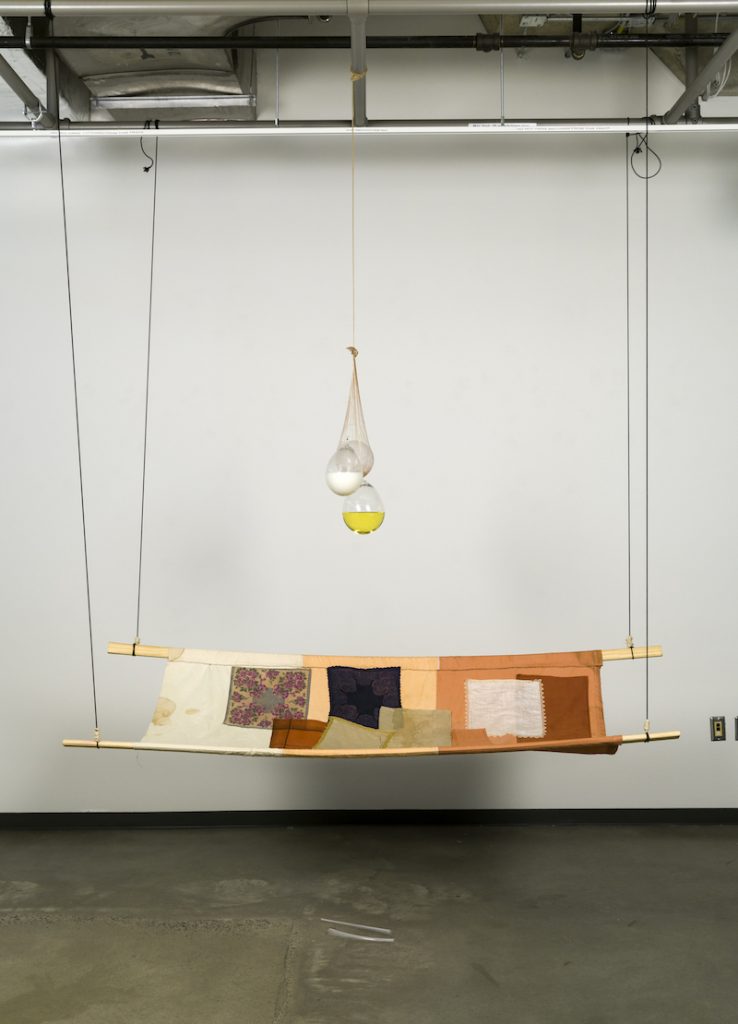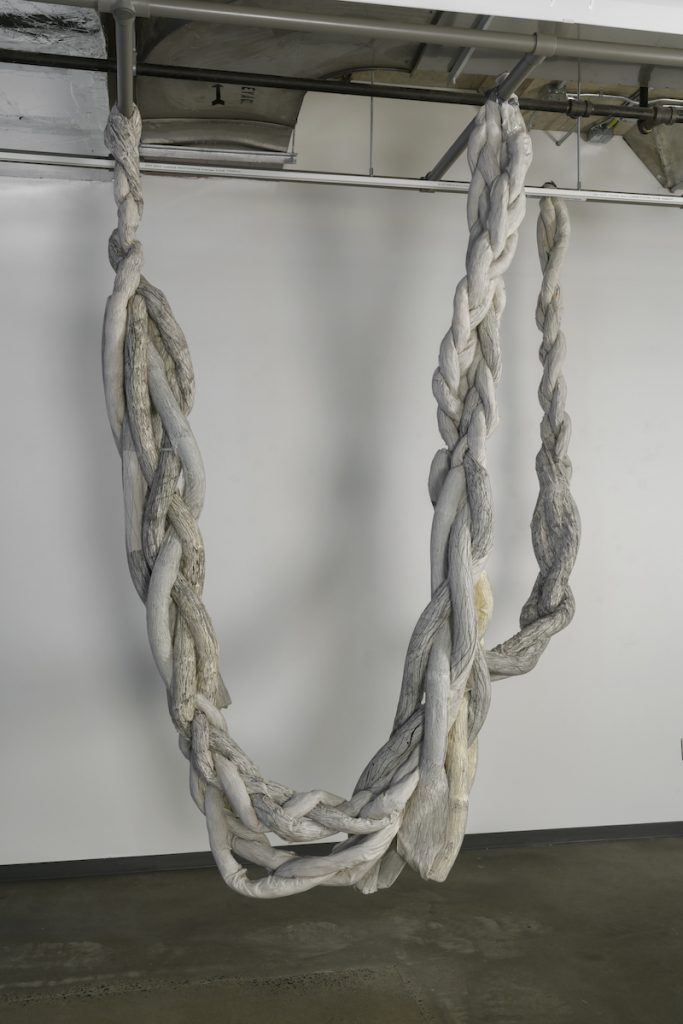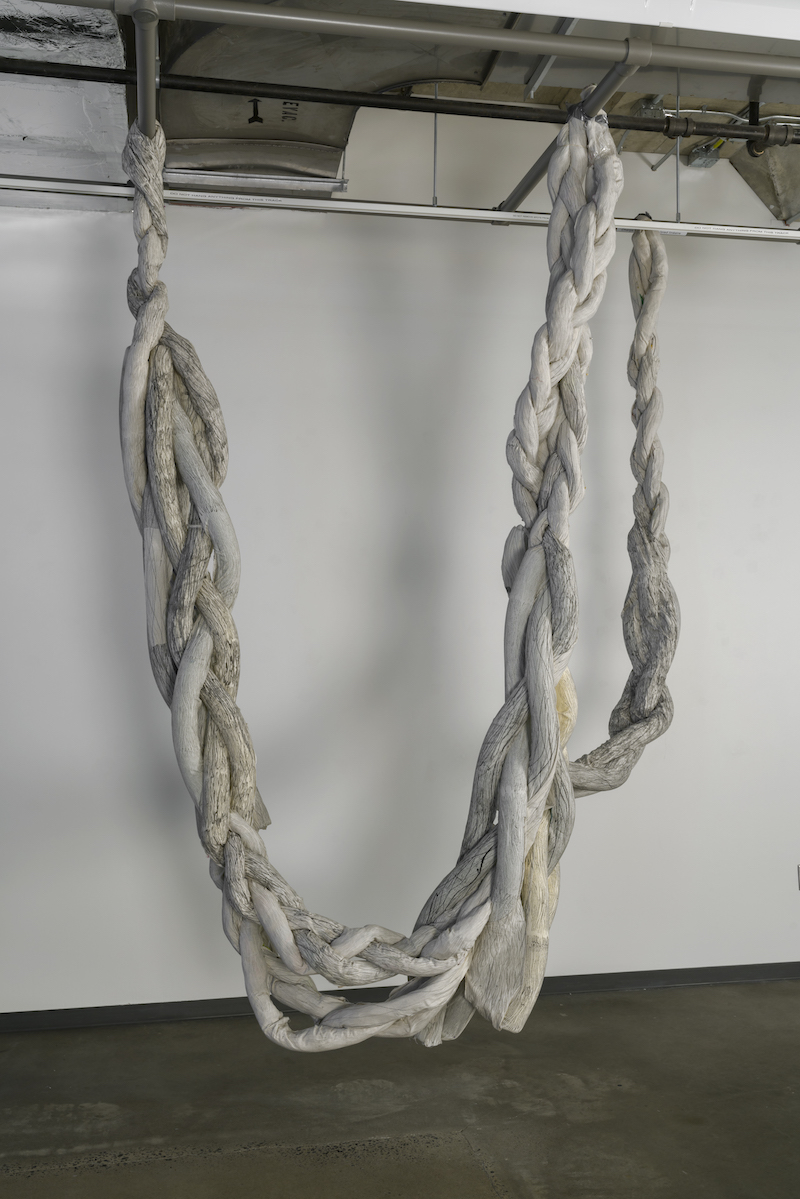Family Works, a multi-faceted project led by a Concordia professor culminates in student work exhibited at the MMFA
PART ONE
It isn’t often that a class project is exhibited at the Montreal Museum of Fine Arts—but until Dec. 5, 11 artworks by Concordia undergraduate students, ranging from video to textile installations, are on display in the promenade at the MMFA.
These works represent the culmination of a year’s worth of work which brought together different programs within the Faculty of Fine Arts in a partnership between the MMFA and Concordia University. Art history and studio arts students had the opportunity to work on a project that transcended the typical classroom experience.
Family Works: A Multiplicity of Meanings and Contexts is a multi-faceted, ambitious project led by Concordia art history professor Loren Lerner. Along with the exhibition at the MMFA, Lerner created a website that groups the collective work done by the undergraduate students in her seminar course, Here’s Looking at You Kid: Picturing Children, Envisioning Childhood.
“It was tough for them, and they were really the very best students. I was really lucky,” said Lerner. “They worked so very hard and there was no grumbling, at least no grumbling with me. But they really understood the challenge. They met the challenge head on.”
The art history students in Lerner’s seminar had the task of analyzing 82 works pertaining to the representation of family from the MMFA’s permanent collection. These analyses are hosted on the Family Works website for all to see, divided into four different sections according to the assignments for the class, which included descriptions of individual works and comparative analyses addressing broad themes of family.
What Mélanie Deveault, educational projects developer at the MMFA, found interesting about the theme of family was its universality. The strength of the website, and of the student works, lies in the diversity and new perspectives reflected on a theme as old as time. According to Deveault, this reflection showcased different ways we can approach the theme of family, and allows people to enjoy the museum’s permanent collection in a new way while discovering a new generation of artists and art historians.
The fourth section of the website hosts the works by 20 studio artists from Raymonde April, Laura Endacott and Tema Stauffer’s undergraduate courses. The studio art students were tasked with producing an artistic work inspired by a piece from the museum’s permanent collection. This work was then analyzed by the art history students.
According to Deveault, the website represents research, quality content and a different point of view from the MMFA’s neighbouring community of Concordia.
“It was over 80 works that were analyzed, discussed and interpreted by university students, so it’s really a perspective from one of our communities that brought richness to the collection,” said Deveault.
For Lerner, creating the website with her students was meant to give them an idea of what they could hope to do after graduation.
“I felt that it’s really so important to understand, because we have to be a little pragmatic—you want to get a job when you graduate, so what kind of work is out there?” said Lerner. Since the target audience for this website is the general public, this meant the tone had to be different from the academic art history essays her students were used to producing.
“I really wanted to create something that the students were working on that gave them skills that they could take into their working life after they’ve graduated,” said Lerner. “So I’m really a believer in web publishing.”
At first, there was no intention to display the student works at the museum. Space at the museum is booked years ahead of time, and there was simply no room to fit in 20 additional artworks done by the students. That changed along the way.
Deveault was impressed with the quality of work produced by this next generation of artists and art historians. So much so that she found an unused space that would be able to host the student work.
“When I received the texts from the works in the collections, and then the interpretations from the studio students… well, we’re always curious to see what’s there, but it was really a joy to see the diversity in interpretations,” said Deveault.
Of the 20 works submitted by the studio students, 11 were selected to be installed in the museum’s promenade, which leads to the education centre. Of those 11, two are videos, ten are displayed as virtual exhibits, and one is a physical work by Geneviève Grenier, displayed at the entrance to the promenade.The virtual works are presented as images on screens along the promenade of the museum. Designed as slide-shows, each of the three screens rotates between the works and includes the text analyses written by the art history students.

“I always believed in the genius of my students. I’ve seen so many amazing things happen at these levels, so I thought yeah, let’s get on board,” said Endacott, who was teaching a 200-level fibres course, where students learned printing and dyeing techniques and how to work with different textiles. “It doesn’t matter if it’s small—it’s the validation of being within the museum’s walls that’s really exciting for a younger student, even for an experienced artist.”
Endacott hopes that the effort put in by the students comes through in the exhibit at the museum. “You don’t hear a lot of people say ‘Well anyone could be an engineer.’ There’s always this assumption that in the arts, it’s very easy,” she said.
In addition to the website and the exhibited student works, a series of videos depicting the process of assembling the website are available on YouTube.
PART TWO
Amanda Grzelak was at work when she found out her installation, Family Roots, would be displayed on a virtual screen in the Montreal Museum of Fine Arts (MMFA).
“I was just completely ecstatic—I was running around, literally jumping for joy. I was in shock, I was telling everyone who was around me. I called my parents right away,” said Grzelak, a studio arts student who was in Endacott’s class. “It really felt like it was an amazing opportunity, especially for an undergraduate student, and it felt like it gave me hope for doing art. Like all the hard work was finally starting to pay off.”

For the students involved in the project, Family Works was more than just an assignment. It was a portfolio-builder and an opportunity.
For Kimberly Glassman, an art history student, part of the challenge was easing into a new mindset.
“We were used to writing essays to be graded in class, but for this it was different because we were peer editing each other’s work,” said Glassman about the Family Works website. “We were more apprehensive that it was going to be read by more people than just the teacher and our peers.”
The website hosts work by 16 art history students and 20 studio arts students. Each written assignment submitted for the class was peer-reviewed, edited, rewritten, re-edited and rewritten again before being posted.
“Above all, I was intrigued by the idea of virtual museums. […] They’re everywhere now and they’re the next step for museum development, I think,” said Glassman. “I was just so happy to hear that the unseen collections of the Museum of Fine Arts were going to be put online virtually in a place people could visit it all the time.”
When Dina Georgaros found out her work would be featured on a website in collaboration with the MMFA, she was intimidated at first—but Lerner pushed everyone to do their best and embrace the challenge.
“It gave us a voice, in a sense,” said Georgaros. “The thing with this project was that it meant something because we were going to be working in collaboration with the museum, and we worked really hard on all the papers we wrote.”
Sarah Amarica, who finished her bachelor’s in art history and has begun her masters’ at Concordia, is happy knowing that the assignments everyone worked on during the year came together to form the website.
“One of our goals was to make art accessible. So we constructed our projects knowing that it might be read by an audience that might not have an art history background,” said Amarica. “It would be great if someone read one of these papers and learned a little bit more about an artwork that they wouldn’t have known before.”
For Grzelak, her installation presented another, additional challenge: size. Her work, consisting of several “roots” intertwined and weaved together, is nine by three yards.
“Working with such a large-scale object was really time consuming and was really a big risk, because, if it didn’t end up looking like how I imagined or didn’t end up working as well as I thought, all of that time would have amounted to nothing,” said Grzelak. “And it’s hard to restart.”
Both the studio art and art history students had the support and confidence of their teachers, who pushed them to write better, produce better and surpass even their own expectations.
“Dr. Lerner puts a lot of faith in undergraduate students. She values our thoughts and our writing,” said Glassman.
To see the work produced by the students, visit the MMFA’s promenade or visit familyworks.hybrid.concordia.ca.




